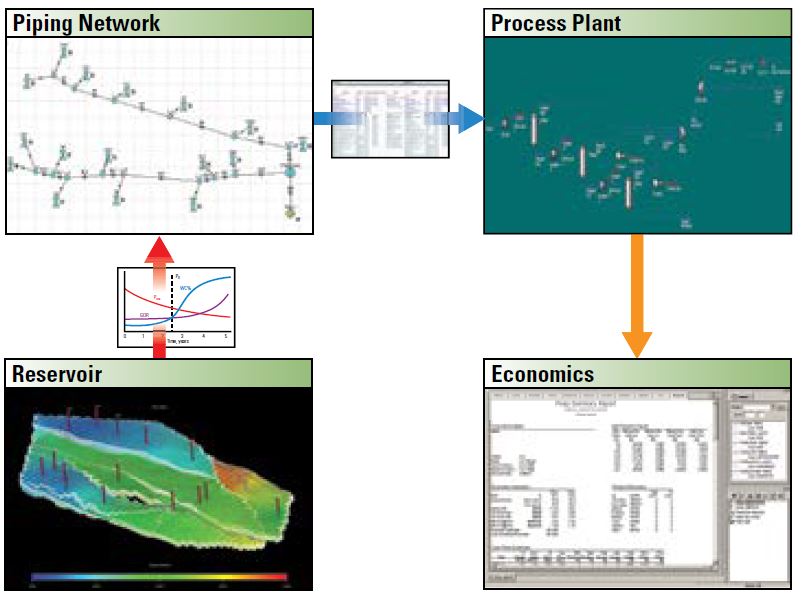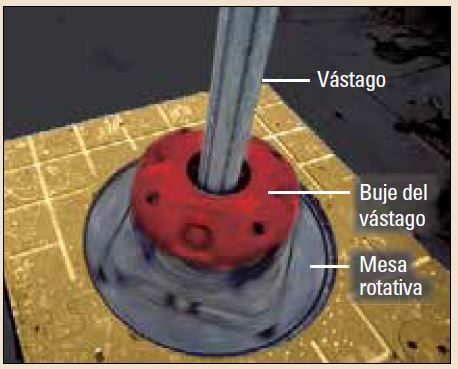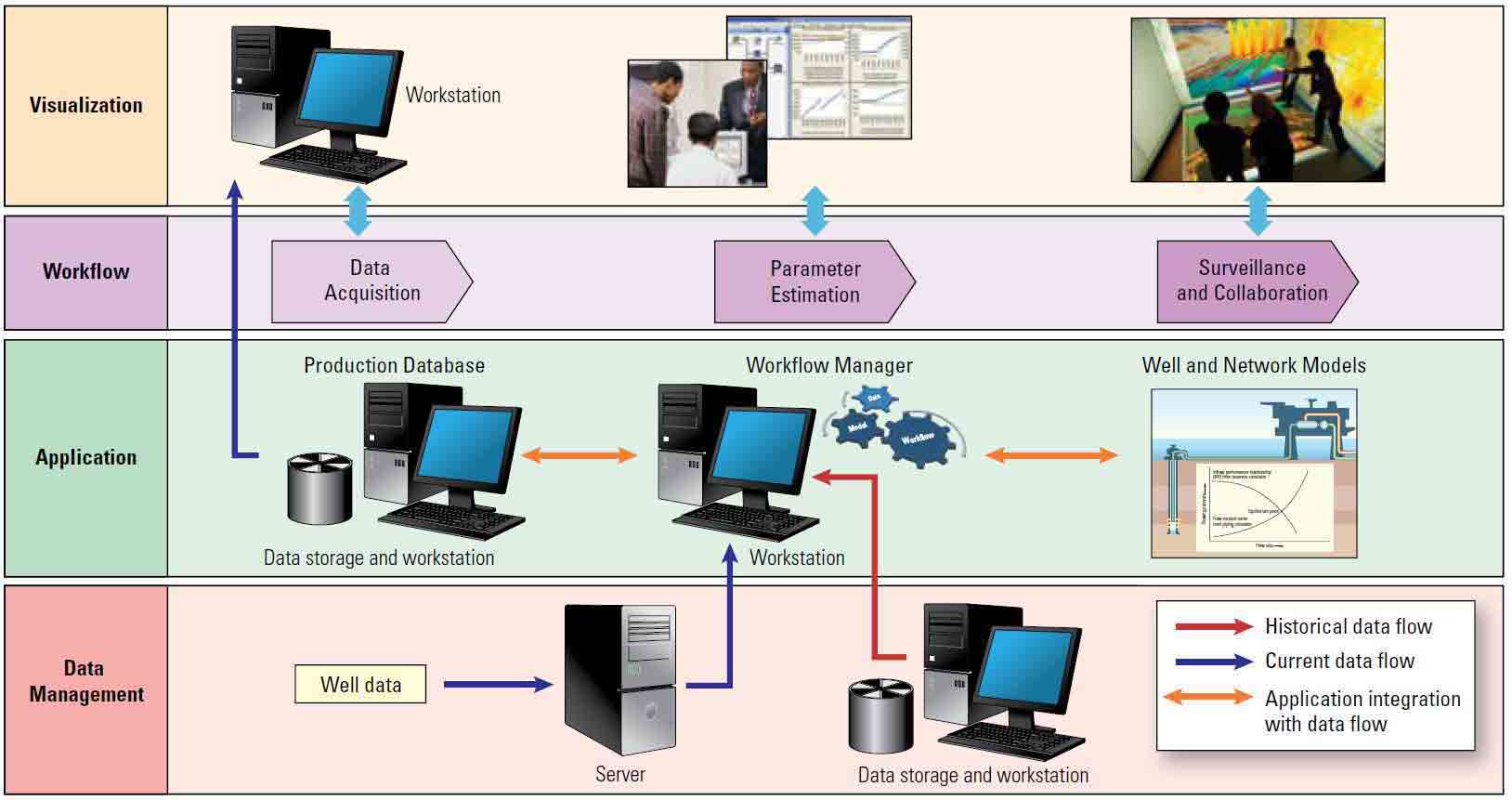The Defining Series: Integrated Asset Modeling
Published: 04/20/2016

The Defining Series: Integrated Asset Modeling
Published: 04/20/2016

Hydrocarbon production is complex because producing assets consist of interconnected systems and processes that are dynamic in nature. Engineering teams face numerous challenges during field planning, development and operations. When planning field development, teams and experts use multiple simulation tools to model the various components of the oilfield system. However, traditional asset modeling methods are generally both static and serial in nature and thus fail to account for the interdependencies and dynamic nature of E&P assets (Figure 1). Integrated asset modeling is a response to oilfield management challenges that must account for complex production operations, the increasing quantity and nature of acquired data and the need for rapid data analysis. Problems suited to such modeling include multicomponent fluid mixtures, suboptimal artificial lift systems, uneconomic drilling targets and flow assurance problems.
Figure 1. Conventional asset modeling. Typically, reservoir engineers initiate conventional asset modeling by using a reservoir model (bottom left) and a well model to analyze flow through porous media and account for the influence of any natural or artificial drive mechanisms. The reservoir simulation results are fed into a piping network model (upper left). The piping network model results are passed to facilities engineers, who use the production profile and composition data to build facilities and process plant models (upper right) to characterize the various compression, separation and chemical processes that may be present. Results from the reservoir, piping and process simulations are then passed to planning engineers for economic modeling (bottom right).

To address these engineering challenges, integrated asset modeling combines asset domains—the reservoir, wellbore, pipeline network, process facilities and economics models—into a total system simulation. Software packages developed for integrated asset modeling provide production rate information and economic predictions for the entire asset over its life and are used by operators for planning and optimization. Integrated asset modeling links individual simulators across technical disciplines, assets, computing environments and locations. This collaborative methodology represents a shift in oil and gas field management, moving it toward a holistic management approach and away from disconnected teams working in isolation.
The benefits from this new approach are significant; they include the promotion of integration, communication and collaboration between disciplines and across geographic boundaries. The technique provides greater insight into field performance and delivers more accurate models. The end results are increased production, reduced expenditure and improved returns for the operator.
Then and Now
Conventional production modeling and integrated asset modeling use indi-vidual simulators for each domain—reservoir, well, pipeline network, process facilities and field economics. Traditional methods apply the simulators separately and typically in isolation, whereas integrated asset modeling links data acquired from the many domains to achieve a combined model for the asset. The traditional approach gave rise to two problems—all simulations of processes downstream of the reservoir represent only one point in time, and such simulations fail to take into account the changing nature of E&P assets in terms of reservoir pressure and fluids.
The deficiencies in the traditional methods gave rise to the digital oil field, in which the data from processes and equipment are constantly monitored. At the same time, a shift from serial workflows to multiple, simultaneous online model-based workflows occurred. Integrated asset modeling encompasses the digital oil field and accounts for the constantly evolving nature of an E&P asset and its life cycle. Such modeling ensures systemwide sharing, or interoperability, of information between people, processes and domains. For example, when boundary conditions change for an asset model, these changes are immediately reflected in the simulators, which update the asset model and become part of the management process for asset operations. Simultaneous online processing using integrated asset modeling adapts well to the ever-changing operations environment that is characteristic of oil and gas fields.
Nodal System Analysis
Integrated asset modeling can be thought of as an extension of nodal system analysis, which is often used to study complex, interacting systems such as pipeline etworks and electrical circuits. Treating the reservoir model as a source of or sink for fluids at the bottom of the well, nodal analysis calls for the selection of a reference point or node that divides the system. In an oilfield production system, the node has several possible locations. Common points for the node are the bottomhole or wellhead, which separate upstream flow from downstream flow. Production components upstream of the node are called the inflow section, whereas those downstream of the node are called the outflow section. After the node location is selected, two boundary conditions must be satisfied—the inflow to the node must equal the outflow, and the node can have only one pressure at a time. To solve the problem, pressure versus flow rate curves are generated for node inflow and outflow. The intersection of the curves yields a solution that satisfies the flow and pressure constraints (Figure 2).
Figure 2. Network balancing using nodal analysis is a technique for balancing the ability of reservoirs to produce fluids into a wellbore with the capacity of tubulars to conduct the flow through the surface-piping network. Typical node locations for coupling the models for the reservoir and piping network are at the bottom of the well (inset) or at the wellhead. Reservoir performance is described by the inflow performance relationship (IPR) from a reservoir simulator; the IPR describes how flowing pressure affects production flow rate. The piping network performance is described by the flow-conduit, or tubing intake, curve from the piping simulator. The IPR and flow-conduit curves intersect at the equilibrium point, which represents the balance of production rate and flowing pressure that is appropriate for the specific conditions being modeled. Output from nodal analysis can be two curves or a set of curves for sensitivity analysis.

To predict lifetime field performance, integrated asset modeling uses a stepwise procedure. At each time step, the inflow and outflow of each nodal point are balanced, satisfying the pressure and flow relationships while honoring the upstream and downstream constraints within the asset model. Time stepping continues until the end of field life is reached.
Holistic Infrastructure and Practice
The integrated asset modeling linkage works across multiple simulators, disciplines and locations. The asset model must be able to meld the differing time requirements of slow simulators, such as those for the reservoir, and fast simulators such as those for the pipeline network. Using integrated asset modeling to link existing production models becomes the key to optimizing the entire field (Figure 3).

Integrated asset modeling continues to mature, and new modeling applications, such as multifield optimization under a single unified infrastructure, are breaking new ground. By improving data quality, automating routine operations, integrating workflows and uniting data and models in a common environment, integrated asset modeling can give operators a clearer picture of field behavior, production potential and economics over the life of an asset.
Oilfield Review 2016.
Copyright © 2016 Schlumberger.
For help in preparation of this article, thanks to William J. Bailey, Cambridge, Massachusetts, USA; Bob Sauv ©, Houston, Texas, USA; and Richard Torrens, Abu Dhabi, UAE.
